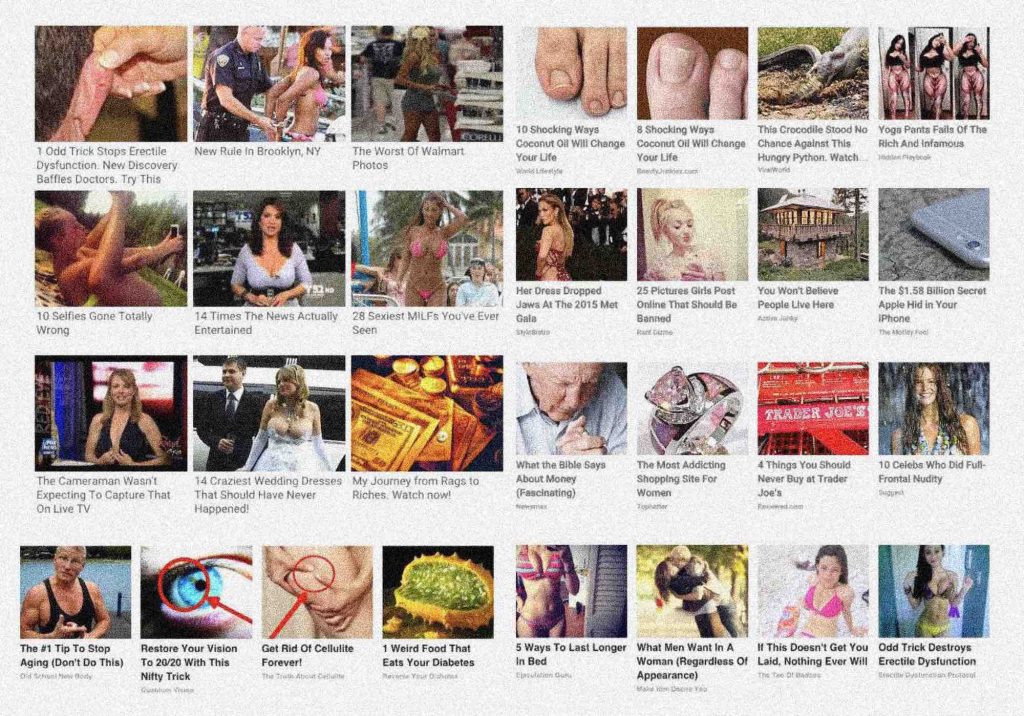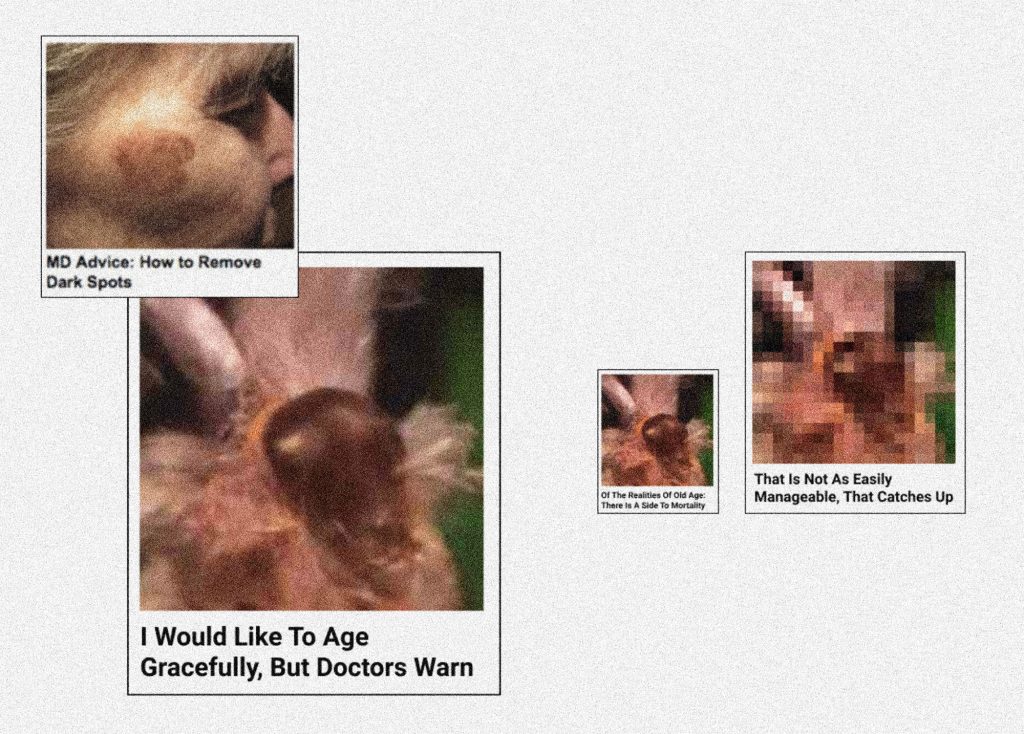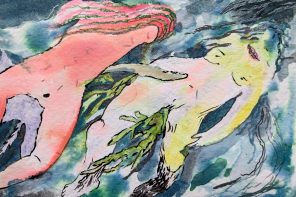The scene is all too familiar, the gestures rehearsed. It begins with the innocence of casual browsing, the wide-eyed wonder as you click and scroll, traipsing around some mildly interesting news article. Then it leers at you, inevitable and horrible. Chumbox ads upset the assumed comfort that comes with browsing. Pairing disturbing imagery with sensationalist captions, these advertisements lurk below news articles, disrupting the nimbleness and gracefulness of the online. Unsightly images of celebrities and skin—writhing masses of flesh and tissues—known as chum, dot the internet. Targeting the subconscious, chumboxes are an unfiltered expression of misdirection and clickbait—body horror made visually tactile.
Boxed into a grid and pushed to the margins of the web, these entrapped monstrosities are unabashed in their repulsiveness. They are spectacle and caricature of death, sex, and information. As John Mahoney writes in “A Complete Taxonomy of Internet Chum,” the visual language of chumboxes “broadcasts our most basic, libidinal, electrical desires back at us. And gets us to click.” Not only is this aesthetic deeply psychologically specific, it also signals the underlying danger that’s inherent to the web—the threat of phishing and malware. Occupying a tenuous liminal ground, chumboxes poke fun at safe and comfortable dichotomies, turning us inside out.
In another internet, these ads could be read as hopeful confessions or a longing for better health and connection. What’s left unsaid is felt most passionately: these uncanny images profess their relentless fascination with and search for self-actualization. From wild miracle cures to salacious gossip, the shrill tone of internet chum is laden with a zany energy that refuses an audience. The absence of a human creator heightens our unease, as time and again formulaic titles proffer secrets to immortality, promises of eternal youth.
Writing on the role of marginal imagery in medieval manuscripts, Michael Camille notes how “travesty, profanation and sacrilege are essential to the continuity of the sacred in society.” It would seem that othering the grotesque, worldly, and mundane would be a useful strategy to mentally separate ourselves from the “baser instincts” and filth of online advertising. But the chumbox impulse remains. “Content creation” now routinely depends on clickbait and shock value. Who are chumboxes for? What do they offer us? If we take them as digital litter, scattered about by sketchy websites and scam artists, how might we honor digital decay?

To want to be forgotten is a personal luxury. I want to be part of the background—hide me away by burying me in a mess of hyperlinks. Let me take up just enough space to remain legible. Let the things I share be ephemeral. How do you recycle storage space? It feels as though extensions of the self (what’s murmured into the void, bottled up and shipped off) simply dissolve and dematerialize. But I’m still here, wandering around abandoned articles, with these abrasive thumbnails goading me on to acknowledge the parts of myself that I turn away from.
They say on the internet nobody knows you’re a dog. The boundlessness of the online feels like an ever distant horizon, the prospect of speaking softly so romantic. That underlying risk of getting scammed is as potent as the assumed tension of the erotic—a strange and peculiar dynamic that might just explain why confessional posts feel so intimate.
Let us return to the margins, muddy the apparent transparency and lightness of dominant structures, and confuse the borders that construct artificial difference. Let me try to embody that which I fear, so that I might begin to articulate my longing in a way that deteriorates gracefully, so that when new feelings arise they are allowed the time to shift, fester, rot, soak through, and take form.

Bibliography / further reading
John Mahoney, “A Complete Taxonomy of Internet Chum.”
Michael Camille, Image on the Edge: The Margins of Medieval Art.
Venkatesh Rao, “Digital Homelessness.”
Leslie Liu is imagining the potential of poetic tech. With interests ranging from the politics of interfaces and design defaults to meme formats and mass aesthetics, they are dedicated to ideas that explore the everyday. She is also onto her last semester of design school in the American midwest.








